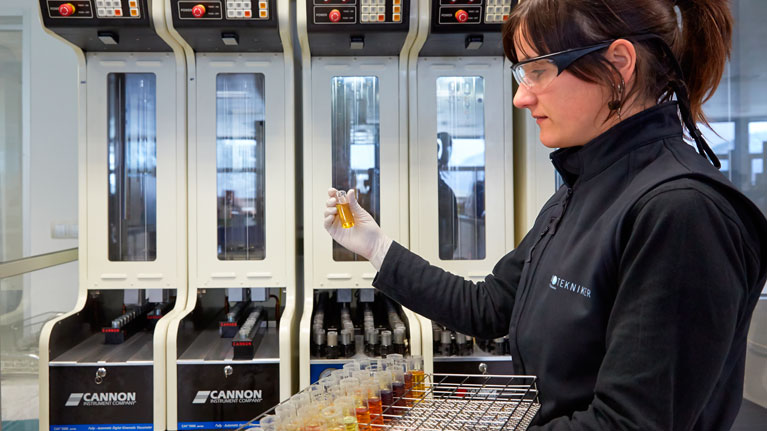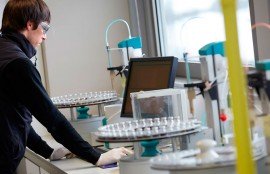
Analysing high temperature heat transfer fluids (HTF) as a diagnostic tool for maintaining solar thermal power plants is essential for this type of facility to operate under optimal conditions.
The most common analyses are often on the new HTF fluids for classification with the following:
| Analysis | Specification |
|---|---|
| Appearance | Clear and clean |
| Composition | Biphenyl and diphenyl ether |
| Humidity | 300 ppm |
| Chlorine | <10 ppm |
| Sulphur | <10 ppm |
| Neutralisation Number | <0.2 mg KOH/g sample |
| Copper corrosion (ASTM D 130) | <<1a |
| Inflammation point V/A (ASTM D 92) | 124 ºC |
| Inflammation point V/C (ASTM D 93) | 110 ºC |
| Combustion point (ASTM D 92) | 127 ºC |
| Self-combustion temperature (ASTM E 659) | 621 ºC |
| Kinematic viscosity at 40 ºC | 2.48 cSt |
| Kinematic viscosity at 100 ºC | 0.99 cSt |
| Density at 25 ºC | 1060 kg/m3 |
| Thermal expansion coefficient at 200 ºC | 0.000979/ºC |
| Average molecular weight | 166 |
| Crystallisation point | 12 ºC |
| Contraction volume on freezing | 6.27% |
| Expansion volume on melting | 6.69% |
| Surface tension in air at 25 ºC | 36.6 din/cm |
| Fusion heat | 97.3 kJ/kg |
| Boiling point | 257 ºC |
| Vaporisation heat at the maximum use temperature of 400 ºC | 206 kJ/kg |
| Specific resistivity at 20 ºC | 6.4*1011 ohm/cm |
| Optimal use range, liquid | 12 ºC a 400 ºC |
| Optimal use range, vapour | 260 ºC a 400 ºC |
| Maximum temperature of the film | 425 ºC |
| Pseudocritical temperature | 499 ºC |
| Pseudocritical pressure | 33.1 bar |
| Pseudocritical density | 327 kg/m3 |
Table. Classification analysis of the new fluid
It must be taken into account that a series of tests are usually carried out as primary indicators of the state of the fluid, while others are used to confirm the results obtained in these primary indicators.
Primary indicators
- Humidity
- Percentage of “low and high boilers”
- Insoluble
Secondary indicators
- Density
- AN
- Viscosity
- Fire point



